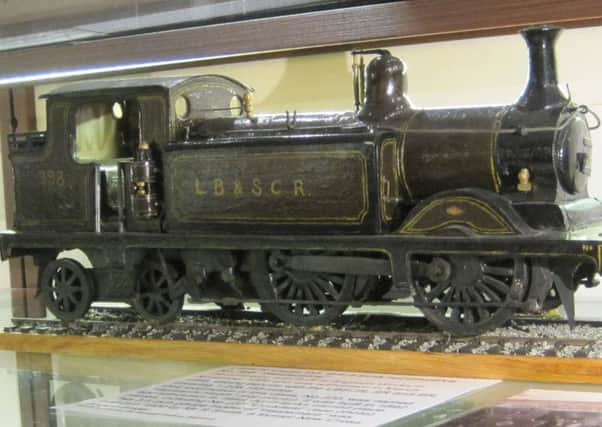Museum marks 175th anniversary of Hayward's Heath railway station


We look at why the line did not come through (or rather under) Cuckfield as originally planned and we remember Joseph Flesher, the engineer responsible for our local stretch of the line, who built himself a grand house on Muster Green, is buried in Cuckfield churchyard and whose descendants still live locally.
As Haywards Heath was initially a terminus, the first passengers had to rely on coach travel to complete their journeys beyond Haywards Heath – rhe replacement buses of their day!
Advertisement
Hide AdAdvertisement
Hide AdBut as confidence in this new mode of transport grew so did the popularity of the railway and Cuckfield rapidly lost the London to Brighton stage coach trade. Employment at the inns and in associated trades was inevitably much reduced but the railway itself offered new opportunities as did the need for staff in the substantial houses being built for, or acquired by, wealthy professional men who could now work in London but live in the country – the first commuters.
Local landed gentry, many of whose families had opposed the building of the railway, saw a golden opportunity 60 years later to make money from it by selling building land near the station, notably on the old Lucastes Estate.
The museum’s picture collection includes an original George Childs water colour of construction work on the Haywards Heath tunnel, the creation of which proved a problem from the outset as it was very wet ground and caused Joseph Flesher’s contract to over-run by nearly three months in 1841.
We also show a copy of its counterpart – the original is in Brighton Museum & Art Gallery – by the same artist looking south towards the Downs.
Advertisement
Hide AdAdvertisement
Hide AdBoth these detailed pictures are graphic reminders of the notoriously dangerous conddditions in which the navvies worked and our collection of associated accident reports makes grim reading. We consider the hard life of the navvies – that forgotten army of men who built the railways with picks, shovels and explosives – no excavating machinery at that time.
Visitors will also see an enlarged copy of a previously unknown print, recently donated to the museum, commemorating a goods train crossing the Balcombe Viaduct on September 21 1841, the first day the line was fully opened through to Brighton.
Anyone who uses Haywards Heath station regularly will probably be especially interested in mostly unpublished pictures from the early 1930s, prior to electrification of the line, of its total demolition and re-building with, incredibly, no interruption of the steam-hauled service.
Generous loans from the Bluebell Railway Museum, the Burgess Hill Model Railway Club and from individual enthusiasts mean that we are able to show a range of model locomotives and railway artefacts.
Advertisement
Hide AdAdvertisement
Hide AdThis display, which will run until the museum’s winter closure on December 10, should appeal to anyone with an interest in railways in general and their impact on our area in particular.
*original in Brighton Museum & Art Gallery
Don’t miss out on all the latest breaking news where you live.
Here are four ways you can be sure you’ll be amongst the first to know what’s going on.
1) Make our website your homepage at www.midsussextimes.co.uk
Advertisement
Hide AdAdvertisement
Hide Ad2) Like our Facebook page at www.facebook.com/midsussextimes
3) Follow us on Twitter @midsussex_times
4) Register with us by clicking on ‘sign in’ (top right corner). You can then receive our daily newsletter AND add your point of view to stories that you read here.
And do share with your family and friends - so they don’t miss out!
The Mid Sussex Times - always the first with your local news.
Be part of it.